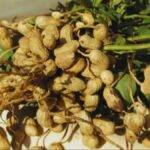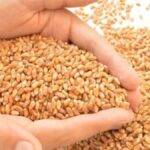Main Points In Hindi (मुख्य बातें – हिंदी में)
-
कृषि का आर्थिक महत्व: दक्षिण पूर्व एशिया में कृषि को अधिकांश सदस्य देशों की अर्थव्यवस्थाओं की "रीढ़" माना जाता है, जो 32% जनसंख्या को रोजगार देती है और GDP में 22.6% का योगदान करती है। यह क्षेत्र गरीबी उन्मूलन और सतत विकास में महत्वपूर्ण भूमिका निभाता है।
-
सतत कृषि और जलवायु परिवर्तन: क्षेत्रीय सहयोग के तहत, आसियान देशों ने टिकाऊ कृषि के सहयोग पर जोर दिया है, जिसमें पारिस्थितिक कृषि, जलवायु परिवर्तन को संबोधित करना और जैव विविधता का संरक्षण शामिल है। यह कृषि प्रणालियों को मजबूत करने के लिए एक महत्वपूर्ण कदम है।
-
वैश्विक चुनौतियाँ: दक्षिण पूर्व एशियाई देशों को गरीबी, असमानता, और खाद्य सुरक्षा की समस्याओं का सामना करना पड़ रहा है, जो जटिल वैश्विक चुनौतियों का परिणाम हैं। इन समस्याओं से निपटने के लिए कृषि के विकास पर विशेष ध्यान दिया जाता है।
-
अनुसंधान और विकास: विशेषज्ञों का सुझाव है कि आसियान सदस्य देशों को कृषि उत्पादकता को बढ़ाने, कृषि उत्पादन की गुणवत्ता में सुधार करने, और आधुनिक विज्ञान और प्रौद्योगिकी के अनुप्रयोग को बढ़ावा देने की आवश्यकता है।
- भविष्य की पहल: 2020-2025 की अवधि में, दक्षिण-पूर्व एशिया में कृषि-पारिस्थितिकी उत्कृष्टता के लिए परियोजनाएँ चल रही हैं, जो पारिस्थितिक कृषि के प्रवर्धन तथा सुरक्षित खाद्य प्रणाली के संक्रमण को तेज करने में मदद कर रही हैं।
Main Points In English(मुख्य बातें – अंग्रेज़ी में)
Here are the main points summarized from the given text about agriculture in Southeast Asia:
-
Significance of Agriculture: Agriculture is a crucial economic sector in Southeast Asia, directly influencing the economies, politics, and societies of member states and regional partners. It plays a vital role in addressing global challenges such as poverty, inequality, and food security.
-
Regional Cooperation and Sustainability: Southeast Asian countries have issued declarations focusing on sustainable agriculture, aiming to foster collaboration in specific areas to tackle challenges related to food security and environmental sustainability.
-
ASEAN Summits and Initiatives: Recent ASEAN summits in Laos highlighted the importance of "increasing connectivity and resilience." ASEAN leaders adopted key documents addressing regional connectivity, climate change, biodiversity, and sustainable agricultural practices.
-
Economic Contribution: Agriculture is viewed as the backbone of many ASEAN economies, employing about 32% of the population and contributing 22.6% to the GDP, which is essential for poverty eradication and sustainable development in the region.
- Challenges and Innovations: The agricultural sector faces significant challenges, including competition for resources, declining productivity, and climate change effects. Experts recommend enhancing ecological agriculture and applying advanced science and technology to improve production efficiency and quality. Projects like the ASEAN Ecological Agriculture and Safe Food System Transition (ASSET) aim to accelerate the transition towards sustainable agricultural systems in the region.


Complete News In Hindi(पूरी खबर – हिंदी में)
दक्षिण पूर्व एशिया में कृषि एक प्रमुख आर्थिक क्षेत्र है, जो प्रत्येक सदस्य राज्य और क्षेत्रीय भागीदार की अर्थव्यवस्था, राजनीति और समाज को सीधे प्रभावित करता है। वैश्विक चुनौतियों के कारण चल रही गरीबी, असमानता और खाद्य सुरक्षा के खतरों के मद्देनजर, दक्षिण पूर्व एशियाई देशों ने टिकाऊ कृषि सहित सहयोग के विशिष्ट क्षेत्रों पर कई घोषणाएँ जारी की हैं।
“कनेक्टिविटी और लचीलापन बढ़ाना” विषय के तहत, लाओस में हाल ही में 44वें और 45वें आसियान शिखर सम्मेलन और संबंधित बैठकों ने महत्वपूर्ण अंतरराष्ट्रीय ध्यान आकर्षित किया। क्षेत्रीय कनेक्टिविटी पर जोर देने के अलावा, आत्मनिर्भरता पर ध्यान आसियान की गैर-पारंपरिक सुरक्षा की बढ़ती चुनौतियों का जवाब देने और उभरते रुझानों के लिए सक्रिय रूप से अनुकूलन करने की क्षमता को प्रदर्शित करता है।
इस संदर्भ में, आसियान नेताओं और साझेदारों ने कई महत्वपूर्ण दस्तावेजों को अपनाया, जैसे कि भविष्य के लिए तैयार आसियान और आसियान-केंद्रित क्षेत्रीय वास्तुकला के लिए इंडो-पैसिफिक पर आसियान आउटलुक, आपूर्ति श्रृंखला कनेक्टिविटी को बढ़ाने, जलवायु परिवर्तन को संबोधित करने जैसे विशिष्ट सहयोग क्षेत्रों पर घोषणाओं के साथ। , जैव विविधता संरक्षण, और टिकाऊ कृषि।
अधिकांश आसियान देशों के लिए, कृषि को उनकी अर्थव्यवस्थाओं की “रीढ़” के रूप में देखा जाता है, जो उन्हें विभिन्न उतार-चढ़ाव और संकटों से निपटने में मदद करता है। यह क्षेत्र लगभग 32% आबादी को रोजगार देता है और सकल घरेलू उत्पाद में 22.6% का योगदान देता है, जो गरीबी उन्मूलन और सतत विकास प्राप्त करने के क्षेत्रीय प्रयासों में महत्वपूर्ण भूमिका निभाता है।
विशेषज्ञों का सुझाव है कि कृषि प्रणालियों को बढ़ाने के लिए, आसियान सदस्य देशों को पारिस्थितिक कृषि के विकास और कृषि उत्पादन में उन्नत विज्ञान और प्रौद्योगिकी के अनुप्रयोग को बढ़ावा देने को प्राथमिकता देनी चाहिए।
विशेष रूप से, टिकाऊ कृषि और सुरक्षित खाद्य प्रणाली प्राप्त करने के लिए पारिस्थितिक कृषि को एक व्यवहार्य विकल्प माना जाता है। इसमें नवीन कृषि प्रणालियाँ शामिल हैं जो रसायनों पर कम निर्भर करती हैं और पर्यावरण के अनुकूल हैं। इनमें ऐसे मॉडल शामिल हैं जो स्थानीय संसाधनों के उपयोग को अधिकतम करते हैं, रासायनिक इनपुट को कम करते हैं, कृषि-वानिकी को एकीकृत करते हैं, फसलों और पशुधन में विविधता लाते हैं, परिदृश्य-आधारित कृषि प्रणालियों को डिजाइन करते हैं, जैविक खेती का अभ्यास करते हैं और संरक्षण कृषि को लागू करते हैं।
2020 से 2025 तक कंबोडिया, लाओस, म्यांमार और वियतनाम में शुरू की गई दक्षिण-पूर्व एशिया में कृषि-पारिस्थितिकी और सुरक्षित खाद्य प्रणाली संक्रमण (एएसएसईटी) परियोजना ने दक्षिण पूर्व एशिया में पारिस्थितिक कृषि में संक्रमण को तेज कर दिया है।
इसी तरह, वियतनाम सभी आसियान कृषि सहयोग गतिविधियों में सक्रिय रूप से शामिल रहा है, जो टिकाऊ और अनुकूली कृषि, परिपत्र कृषि के साथ-साथ आसियान खाद्य सुरक्षा और पोषण के विकास में महत्वपूर्ण योगदान दे रहा है।
आसियान आर्थिक समुदाय में अपनी महत्वपूर्ण भूमिका के बावजूद, कृषि कई जोखिमों का सामना करने वाला एक कमजोर क्षेत्र बना हुआ है। वियतनाम का कृषि क्षेत्र भूमि और पानी जैसे संसाधनों के लिए अन्य आर्थिक क्षेत्रों के साथ गहन प्रतिस्पर्धा करता है। इसके अतिरिक्त, इसे उत्पादकता स्तर में गिरावट और प्राकृतिक आपदाओं और जलवायु परिवर्तन के प्रभावों सहित चुनौतियों का सामना करना पड़ता है। इसलिए, आसियान देशों को कृषि उत्पादन में विज्ञान और प्रौद्योगिकी के अनुप्रयोग को तेज करने और उत्पादकता, उत्पाद की गुणवत्ता बढ़ाने और उत्पादन प्रक्रियाओं को अनुकूलित करने के लिए मूल्य श्रृंखलाओं को व्यवस्थित करने की आवश्यकता है।
आसियान देशों को कृषि उत्पादन में विज्ञान और प्रौद्योगिकी के अनुप्रयोग को तेज करने और मूल्य श्रृंखलाओं को व्यवस्थित करने, उत्पादकता, उत्पाद की गुणवत्ता में सुधार करने और संपूर्ण मूल्य श्रृंखला में खाद्य गुणवत्ता और सुरक्षा सुनिश्चित करने के लिए उत्पादन, वितरण और प्रबंधन को अनुकूलित करने की आवश्यकता है। आसियान कृषि सहयोग प्रभावी ढंग से कार्यान्वित किया जा रहा है और खाद्य सुरक्षा सुनिश्चित करने में योगदान देकर महत्वपूर्ण परिणाम प्राप्त किए हैं; टिकाऊ, अनुकूली और कम उत्सर्जन वाली कृषि का विकास करना; चक्राकार कृषि; जहरीले कृषि रसायनों के उपयोग को कम करना; फसल और पशु अपशिष्ट का पुनर्चक्रण; प्रकृति-आधारित समाधानों को बढ़ावा देना; टिकाऊ भूमि और जल संसाधन सुनिश्चित करना; जलवायु-स्मार्ट कृषि; और डिजिटल कृषि./
- कहानी: वीएनपी
- तस्वीरें: वीएनए
- होंग हान द्वारा अनुवादित
- ट्रांग नुंग द्वारा डिज़ाइन किया गया
Complete News In English(पूरी खबर – अंग्रेज़ी में)
Agriculture is a key economic sector in Southeast Asia that directly influences the economy, politics, and society of each member state and regional partners. In light of global challenges like ongoing poverty, inequality, and food security threats, Southeast Asian countries have made several announcements focused on specific areas of cooperation, including sustainable agriculture.
Under the theme “Increasing Connectivity and Resilience,” the recent 44th and 45th ASEAN Summits and related meetings in Laos have drawn significant international attention. Besides emphasizing regional connectivity, a focus on self-reliance demonstrates ASEAN’s ability to respond to increasing non-traditional security challenges and adapt actively to emerging trends.
In this context, ASEAN leaders and partners have adopted several key documents, such as the ASEAN Outlook on the Indo-Pacific for a future-ready ASEAN and ASEAN-centered regional architecture, with announcements on specific areas of cooperation like improving supply chain connectivity and addressing climate change, biodiversity conservation, and sustainable agriculture.
For most ASEAN countries, agriculture is seen as the “backbone” of their economies, helping them cope with various fluctuations and crises. This sector employs around 32% of the population and contributes 22.6% to GDP, playing a significant role in regional efforts to eliminate poverty and achieve sustainable development.
Experts suggest that to enhance agricultural systems, ASEAN member countries should prioritize the development of ecological agriculture and applying advanced science and technology in agricultural production.
In particular, ecological agriculture is considered a viable option for achieving sustainable agriculture and safe food systems. It involves innovative farming systems that rely less on chemicals and are environmentally friendly, incorporating models that maximize local resource use, reduce chemical inputs, integrate agroforestry, diversify crops and livestock, design landscape-based farming systems, practice organic farming, and implement conservation agriculture.
The Agricultural-Ecological and Safe Food System Transition (ASSET) project, initiated between 2020 and 2025 in Cambodia, Laos, Myanmar, and Vietnam, has accelerated the transition to ecological agriculture in Southeast Asia.
Similarly, Vietnam has been actively involved in all ASEAN agricultural cooperation activities, significantly contributing to the development of sustainable and adaptive agriculture, circular agriculture, and ASEAN’s food security and nutrition.
Despite its important role in the ASEAN economic community, agriculture remains a vulnerable sector facing many risks. Vietnam’s agricultural sector competes intensely for resources like land and water with other economic sectors. Additionally, it confronts challenges such as declining productivity and the impacts of natural disasters and climate change. Hence, ASEAN countries need to accelerate the application of science and technology in agricultural production and organize value chains to enhance productivity, improve product quality, and optimize production processes.
ASEAN countries need to enhance the application of science and technology in agricultural production and organize value chains to improve productivity, product quality, and ensure food quality and safety across the entire value chain. ASEAN agricultural cooperation is being effectively implemented, achieving significant results in ensuring food security; developing sustainable, adaptive, and low-emission agriculture; promoting circular agriculture; reducing the use of harmful agricultural chemicals; recycling crop and livestock waste; promoting nature-based solutions; ensuring sustainable land and water resources; practicing climate-smart agriculture; and developing digital agriculture.
- Story: VNP
- Photos: VNA
- Translated by Hong Hanh
- Designed by Trang Nung
This simplified version retains the essence of the content but presents it in clearer English.










